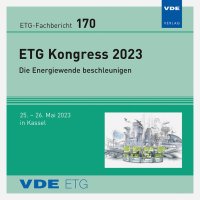Tie open point relocation as possible replacement for the step voltage regulator
Konferenz: ETG Kongress 2023 - ETG-Fachtagung
25.05.2023-26.05.2023 in Kassel, Germany
Tagungsband: ETG-Fb. 170: ETG Kongress 2023
Seiten: 6Sprache: EnglischTyp: PDF
Autoren:
Hachimy, Khalid (Reutlingen University, Reutlingen, Germany)
Yerima, Yuven; Schmid, Christoph (DIgSILENT GmbH, Gomaringen, Germany)
Truckenmueller, Frank (Hochschule Reutlingen, Germany)
Bernhardt, Alfred; Eilenberger, Simon (FairNetz GmbH, Reutlingen, Germany)
Inhalt:
The increase in distributed energy generation, such as photovoltaic systems (PV) or combined heat and power plants (CHP), poses new challenges to almost every distribution network operator (DNO). In the low-voltage (LV) grids, where installed PV capacity approaches the magnitude of household load, reverse power flow occurs at the secondary substa-tions. High PV penetration leads to voltage rise, flicker and loading problems. These problems have been addressed by the application of various techniques amongst which is the deployment of step voltage regulators (SVR). SVR can solve the voltage problem, but do not prevent or reduce reverse power flows. Therefore, the application of SVR in low voltage grids can result in significant power losses upstream. In this paper we present part of a research project investi-gating the application of remote-controlled cable cabinets (CC) with metering units in a low-voltage network as a possible alternative for SVR. A new generation of custom-made remote-control cable cabinets has been deployed and dynamic network reconfigurations (NR) have been realized with the following objectives: (i) reduction of reverse power flow through the secondary substation to the upstream network and therefore a reduction of upstream losses, (ii) reduction of the voltage rise caused by distributed energy resources and (iii) load balancing in the low-voltage grid. Secondary objec-tives are to improve the DNO's insight into the state of the network and to provide further information on future smart grid integration.


